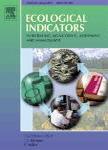版权所有:内蒙古大学图书馆 技术提供:维普资讯• 智图
内蒙古自治区呼和浩特市赛罕区大学西街235号 邮编: 010021

作者机构:Univ Tehran Fac Nat Resources Dept Environm Tehran Iran Educ & Extens Org AREEO Res Inst Forests & Rangelands Agr Res Tehran Iran Univ Georgia Sch Forestry & Nat Resources Athens GA 30602 USA Arak Univ Fac Agr & Nat Resources Dept Med Plants Arak *** Iran
出 版 物:《ECOLOGICAL INDICATORS》 (Ecol. Indic.)
年 卷 期:2025年第170卷
核心收录:
学科分类:0710[理学-生物学] 0830[工学-环境科学与工程(可授工学、理学、农学学位)] 07[理学] 09[农学] 0713[理学-生态学]
主 题:Uncertainty Linear regression Non-linear regression Landscape Water quality
摘 要:The assessment of uncertainty in water quality prediction models is crucial for understanding the reliability of these models. This research focuses on the southern basin area of the Caspian Sea in Iran, where there have been limited studies on uncertainty analysis in water quality models. First, a forest layer was extracted from land cover map and 25 large watersheds were selected. River water quality was then assessed from the perspective of 8 landscape connectivity metrics and 12 graph theory indices. We developed predictive models using stepwise linear regression, power, exponential, and logarithmic models to locate the best model form for each water quality parameter (dependent variable) we examined. The goal of this study was to analyze the uncertainty in both linear and non-linear water quality regression models for this region. The researchers used a Monte Carlo simulation method, which is a common approach to investigate uncertainty. First, they determined the best distribution of the independent variables in the regression models using the Kolmogorov-Smirnov goodness of fit test. Then, they generated 15,000 random data points based on the characteristics of the identified variable distributions. In the third stage, new regression models were created using the data from the previous stages. Probability density functions related to the output of the models were developed, and uncertainty analysis was conducted based on the behavior of the models. The results indicated that the CO3 model had the lowest uncertainty bandwidth and the highest R2 among other models. Additionally, the K models had less bandwidth than the other models developed. The research results showed that more than 70% of the models produced results within an acceptable range of uncertainty. Furthermore, the normalized RMSE (NRMSE) values associated with the models were all in the range of 0 to 30%, which is considered acceptable. These outcomes suggest that landscape indicators and graph the